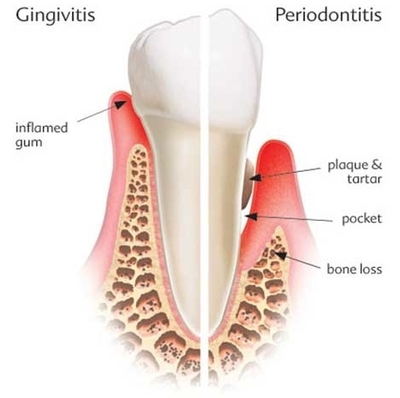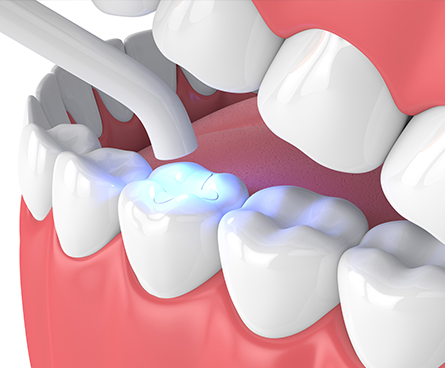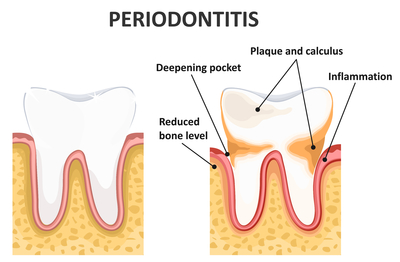Periodontal (Gum) Disease

Periodontal (gum) disease is a contamination of the tissues that hold your teeth in place. It’s in general caused by poor brushing and flossing habits that allow plaque. Wondering what is plaque? A sticky film of bacteria—to increase on the teeth and solidify. In advanced stages, periodontal disease can cause sore, bleeding gums; painful chewing problems; and even tooth loss.
Periodontal (Gum) Disease: Causes
Our mouths are thick with bacteria. These bacteria, besides mucus and other particles, persistently form a muggy, colorless “plaque” on teeth. Brushing and flossing help dispose of plaque. Plaque if not removed can harden and form “tartar”. Most importantly, brushing cannot clean it. Only a specialized cleaning by a dentist can take away tartar.
There are countless risk factors for gum disease. However, smoking is the most significant factor. Smoking can at times make treatment for gum disease less successful. Other risk factors consist of diabetes; hormonal changes in girls and women; medications that reduce the flow of saliva.
Symptoms: Periodontal (Gum) Disease

- Bad breath that won’t go away
- Red or swollen gums
- Tender or bleeding gums
- Painful chewing
- Loose teeth
- Sensitive teeth
- Receding gums or longer appearing teeth
Diagnosis: Periodontal (Gum) Disease
Get your gums inspected by your dentist habitually to confirm if there are any signs of inflammation
Use a tiny ruler called a “probe” to test for and assess any pockets around the teeth. In a healthy mouth, the deepness of these pockets is frequently between 1 and 3 millimeters. This test for pocket depth is habitually trouble-free.
Ask about your medical history to make out conditions or risk factors that may have a say in gum disease.
The Dentist Glendale may also:
- Take an x-ray if there is any bone loss
- Refer you to a periodontist
Treatment: Glendale Gum Disease

The chief goal of treatment is to manage the infectivity. The number and types of treatment will differ, depending on the level of the gum disease. Any type of healing requires that the patient carries on good everyday care at home. The dentist may also recommend changing certain behaviors, like quitting smoking, as a way to perk up your treatment results.
Glendale Periodontal Disease: Helpful Tips
Smile Makeover of LA, Dr. Sahakyan suggests ways to keep your gums and teeth healthy:
- Brushing your teeth twice a day with fluoride toothpaste.
- Regularly flossing to remove plaque from between teeth.
- Visiting the dentist habitually for a check-up and professional cleaning.
- Quit smoking.
Warning signs: Periodontal (Gum) Disease
- Bad breath or bad taste that won’t go away
- Red or swollen gums
- Painful chewing
- Tender or bleeding gums
- Sensitive teeth
- Loose teeth
- Gums that have pulled away from your teeth
- Any change in the system your teeth fit together when you bite
- Any change in the fit of partial dentures
Is Periodontal Disease Reversible?

Slight periodontal disease is the second stage of periodontal disease. To put it in simple words, it is not reversible, but it is manageable. As a patient reaches stage two, the infection spreads to the bone and starts its bone-destroying process.
Glendale Periodontal Disease: Choose Smile Makeover of LA
If you are in the Glendale area and looking for a dependable dental clinic to treat periodontal disease, reach us at Smile Makeover of LA. Call us at 8185782332, Dr. Sahakyan, will be happy to serve you.
